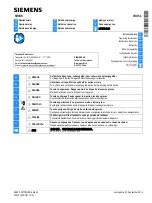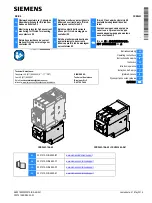
Effective: April 1981
NEW INFORMATION
ABE Power T&D Company Inc.
Relay Division
Coral Springs, FL 33065
Instruction Leaflet
I.L. 41-498.5
Type KD Compensator
Distance Relays Calibration
and Maintenance Procedures
These instructions are intended to supplement
Instruction Leaflets 41-491, 41-498.11, 41-491.4,
41-498.12 and 41-490, covering the KD-1, 4, 41,
5, 10, and 11 line of compensator distance relays,
respectively. These instructions expand on the in-
formation given in these I.L.'s and suggest what
elements should be included in a calibration and
maintenance program.
A calibration and maintenance program
should involve two steps: 1) a receiving accept-
ance check and 2) a routine (periodic) mainten-
ance program. These two steps are outlined below:
RECEIVING ACCEPTANCE
Received relays should be subjected to the
checks outlined in the applicable I.L. These checks
will insure that there is no shipping damage and
that the relay has been received in the same cali-
brated condition as it left the factory. They will
insure that set-up procedures such as removing
contact blocking has been accomplished. A re-
ceiving acceptance check should include the
following steps:
1. Perform all of the mechanical and electrical
tests listed in the receiving acceptance section
of the applicable I.L., include the maximum
torque angle test, even if it is not called for
in some I.L.‘s.
2.
Follow the
appropriate test procedures outlined in
I.L.‘s covering the K-DAR FIELD TEST UNIT.
It is suggested that all dial test readings in each test
be recorded for future reference. This information
3.
will be very helpful in recognizing possible drift of
electrical characteristics.
If the settings to be applied to the relay when it is
installed are known, the relay should be set to
these settings and checked with the field test units
as noted in step 2 above. A record
for future refer-
ence should be taken.
The relay test values using
the KDAR test unit should check to be within 2 7
percent of the relay settings.
ROUTINE MAINTENANCE
The relay should be checked periodically at
time intervals dictated by previous experience
and practices. Westinghouse recommends that
the time interval between checks be a maximum
of two years. Routine maintenance should include
at
1.
2.
3.
leas; the following steps:
Repeat step 2 or 3 under Receiving Acceptance
and record test results.
Compare test results with previous results. If
any test values deviate from previous checks
by more than &5 percent, recheck relay per-
formance in line with the receiving acceptance
checks outlined above step 1.
Retain records of test results on each particular
relay. During each routine maintenance, the
records should be analyzed to determine if
there is any evidence of drift; i.e., continued
change in characteristic in the same direction.
Evidence of drift should be traced to the parti-
cular element involved, usually a capacitor or
resistor and this element replaced.
All possible contingencies which may arise during installation, operation or maintenance, and all details
and variations of this equipment do not purport to be covered by these instructions. ff further information
is desired by purchaser regarding this particular installation, operation or maintenance of this equipment,
the local ABB Power T&D Company Inc. representative should be contacted.
in U.S.A






















